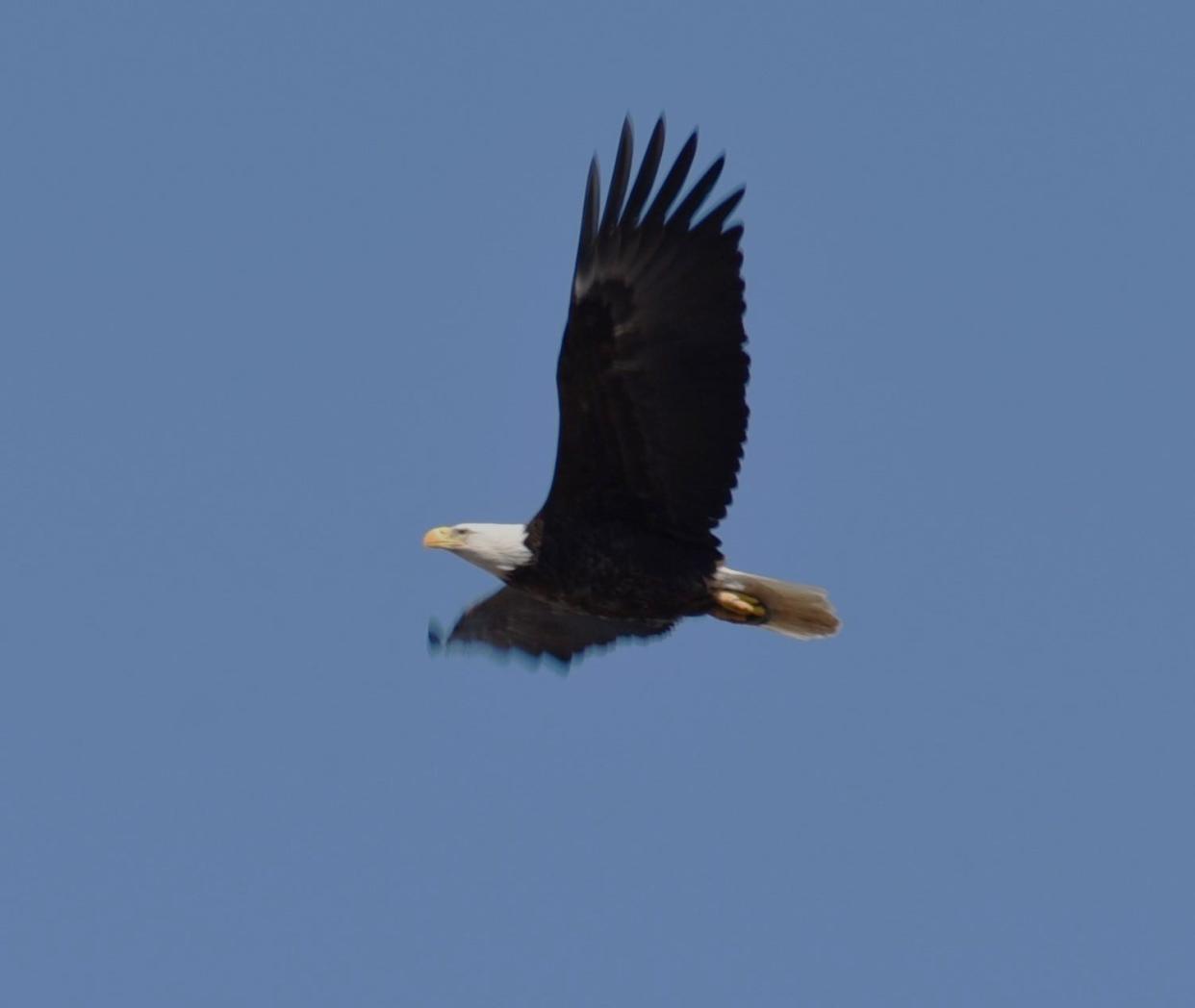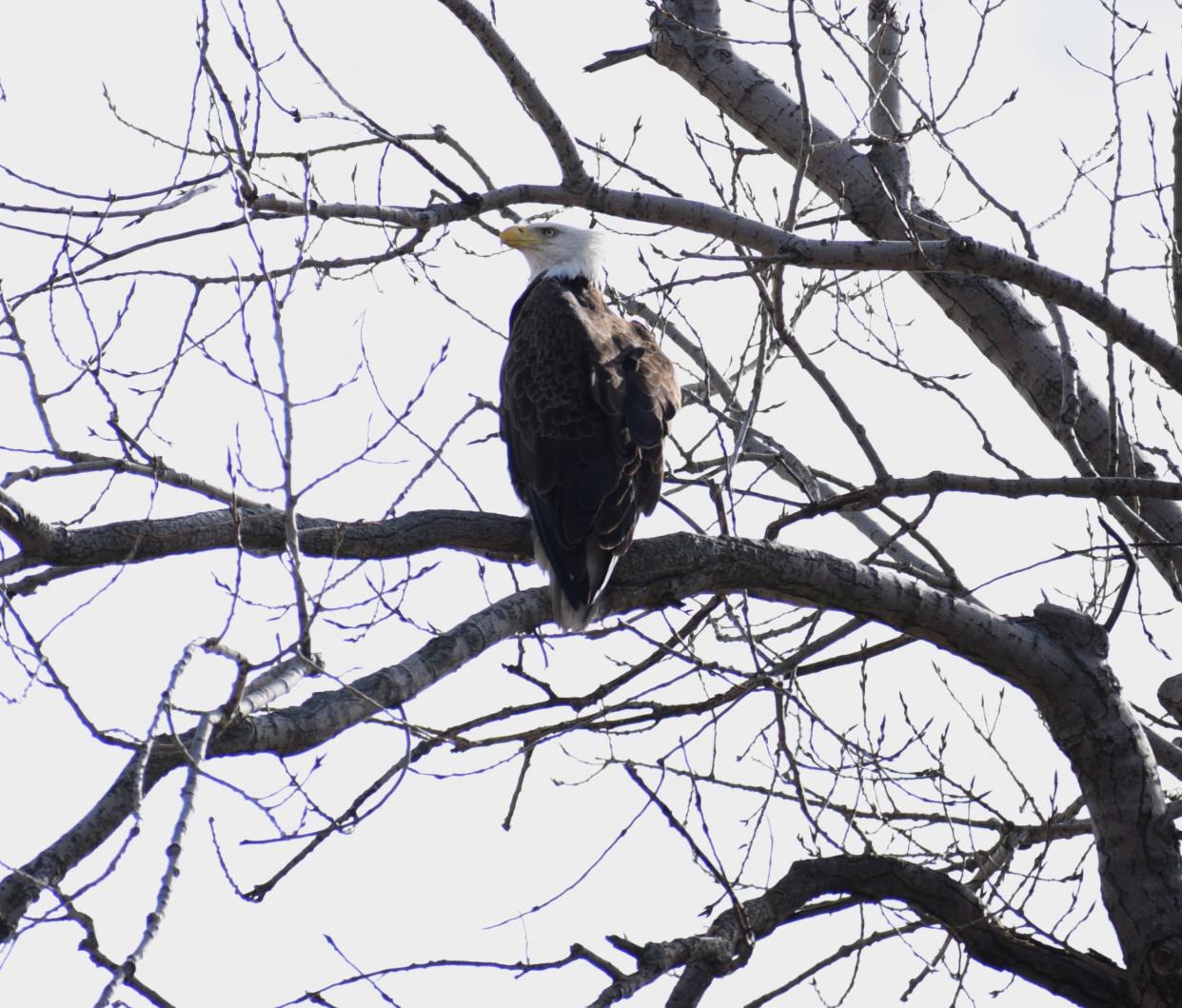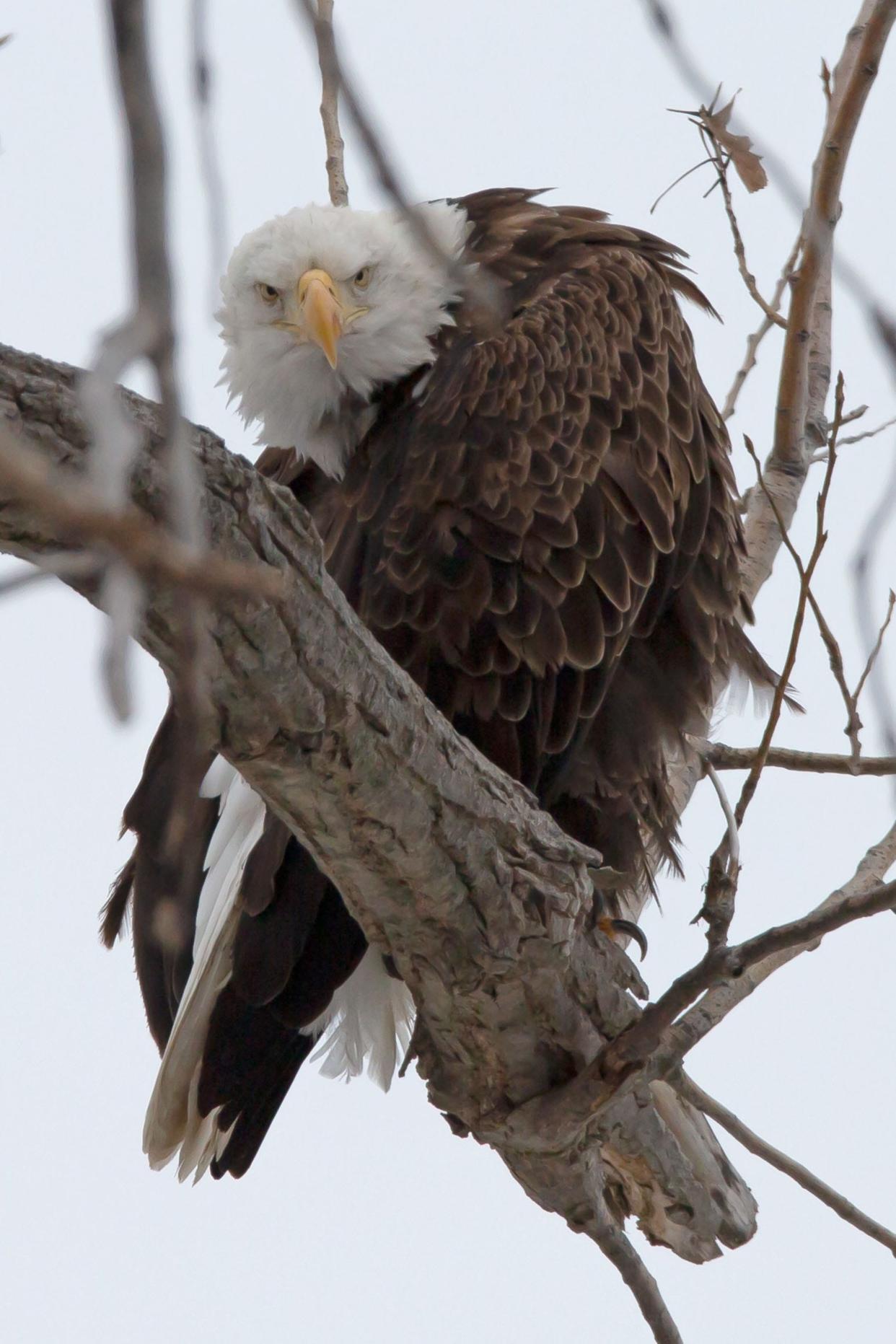Ottawa County leads Ohio in most bald eagle breeding pairs. How they got their groove back.
OAK HARBOR ― On any given day, one does not have to travel far to see a bald eagle's nest or an eagle in Ottawa County.
Before spring buds bloom, and during their nesting season, bald eagles dot the skies, trees and waterways in the area — a magnificent triumph for conservationists.

Once an endangered species, these iconic birds have rebounded and even flourished in Ottawa County, which boasts more breeding pairs than anywhere else in Ohio at nearly 100.
Black Swamp Bird Observatory Research Director Mark Shieldcastle was an integral part of the eagles' rebound.
Through educating the public, fostering young eagles with adult pairs, building assisted nest bases and habitat changes, Shieldcastle and others involved developed the recovery plans for the bald eagle and helped it to flourish.
Saved from the brink of extinction
Bald eagles were hunted, poisoned and extirpated from their habitat across the contiguous U.S. for more than a century. Contamination from DDT, a powerful insecticide, found its way into eagles' prey and made their eggs so fragile they often broke while their parents incubated them.

Rachel Carson's book, "Silent Spring" brought to light the disastrous effects of DDT and other pesticides on wildlife, including the bald eagle, Shieldcastle said. It changed the public's view on these pesticides and initiated change.
In the late 1960s, there were fewer than 500 breeding pairs in the United States.
In the 1970s there were a total of four in the state of Ohio.
The Bald and Golden Eagle Protection Act, enacted in 1940, and amended several times since, prohibits anyone, without a permit issued by the Secretary of the Interior, from "killing"taking" bald or golden eagles, including their parts (including feathers), nests or eggs.
The discovery of DDT's disastrous effects on wildlife led to its ban in 1972. A year later, the Endangered Species Act was signed into law and bald eagles were included on the list, providing the raptor with strong federal protections.
Endangered Species Act at 50: How it's aided eagles, osprey, falcons, people in Pennsylvania
As the contaminants in the eagles' food sources went down, their numbers began to recover.
Shieldcastle said another contributing factor was fostering young eagles from captive pairs in zoos and allowing them to be raised by wild adult pairs.
Ohio was the first priority for the bald eagles recovery, and zoos across the country were happy and eager to help, he said.

Remaining Ohio eagles sent to Ottawa, Sandusky, Lucas counties
They looked at territories where land was plentiful, fish and prey were abundant and healthy and the four remaining breeding pairs were placed in Ottawa, Sandusky and Lucas counties, he said.
Because trees like elm and sycamore aren't as plentiful as they used to be, agencies also built artificial nest bases for eagles to build upon. Bald eagles' nests can weigh between 500 pounds and 1,000 pounds and they will reuse the nest year after year.
Educating the public about bald eagles, what they needed in order to survive, how to give them space during critical times while nesting and more was key, too.
"Show them the respect they deserve, enjoy them from a distance," Shieldcastle said.
The bird has become the emblem for the state of Ohio, and public bandings were attended by hundreds of people, Shieldcastle said.
More: Volunteer group cleans beach shores at area wildlife refuges
Other birds, animals also recovering in local counties
Through good will from the public and government protections, the state now boasts some of the best eagle-watching in the country. This recovery plan has been applied to other species in need of help too, he said, like to the trumpeter swans, osprey, river otters and more.
Essentially all the factors worked together to help the bald eagle flourish, with more than 100 nests in Ottawa County by Shieldcastle's estimation.
"We bought them time to adapt and recover," Shieldcastle said.
Popular viewing areas established
Bald eagles typically lay their eggs in February and March and incubate them until they hatch around 35 days later. They are very vulnerable at this time.
If you spot a nest, you need to stay at least 100 yards away. Any closer and you could cause the eagles to abandon their eggs.
Shieldcastle said giving eagles space when viewing and photographing is not only the right thing to do, it's required by law.
"Basically, if you've done something to make them change their behavior, you're too close," he said.
Eagles adapting to people
Eagles have surprised researchers by adapting to people as well, building nests in cemeteries, fields, backyards and business properties around the state.
It was once thought they needed more space to build, hunt and live, but now they seem to have acclimated slightly to their human neighbors and other breeding pairs.
Today there are birds in every county in Ohio, Shieldcastle said.
Ottawa National Wildlife Refuge in Oak Harbor hosts wildlife drives (April 20-21, April 27-28, May 3-19, May 25-27), that are only open on specified dates and are weather-dependent. Guests can follow the several-mile drive and see several eagle nests along the way. Gates for the wildlife drive open at sunrise and close one hour before sunset.
Magee Marsh Wildlife Area in Oak Harbor: This 2,202-acre controlled hunting area is located 17 miles west of Port Clinton on Ohio 2, and 10 miles north of Oak Harbor on Ohio 19, just to the east of Ottawa National Wildlife Refuge.
Spring and fall migrations are spectacular at Magee Marsh, with more than 300 species of birds recorded. Bald eagles, owls, osprey and a wide variety of hawks can be seen during the spring.
An accessible boardwalk that meanders through the beach ridge provides some of the best birding opportunities in the Midwest. Nests are easily visible from the parking lot.
This article originally appeared on Port Clinton News Herald: Bald eagle recovery in Ohio especially visible in Ottawa County
